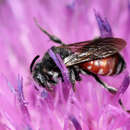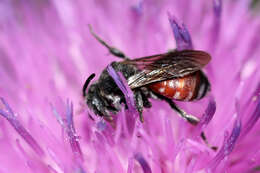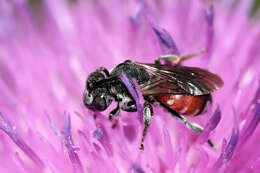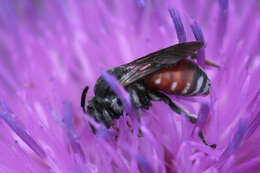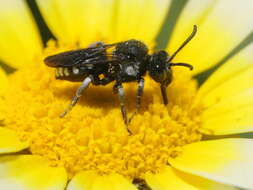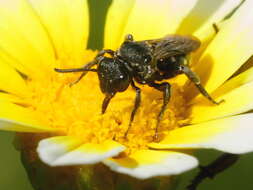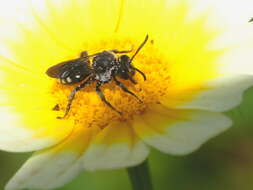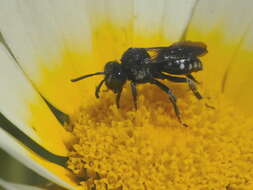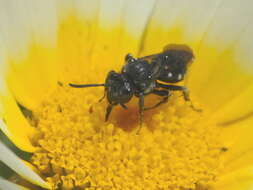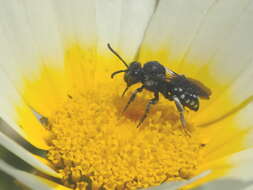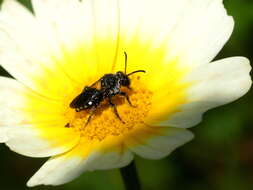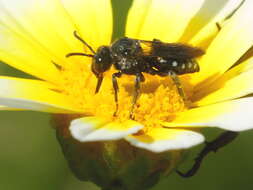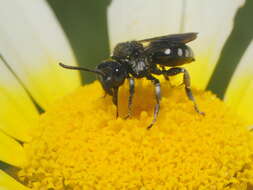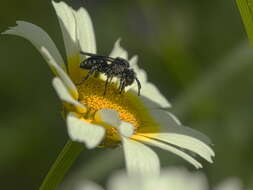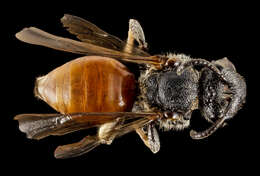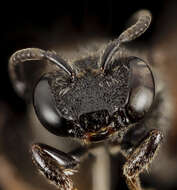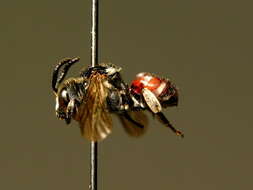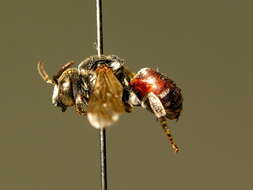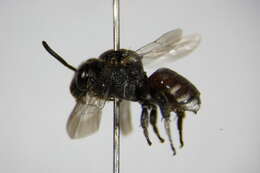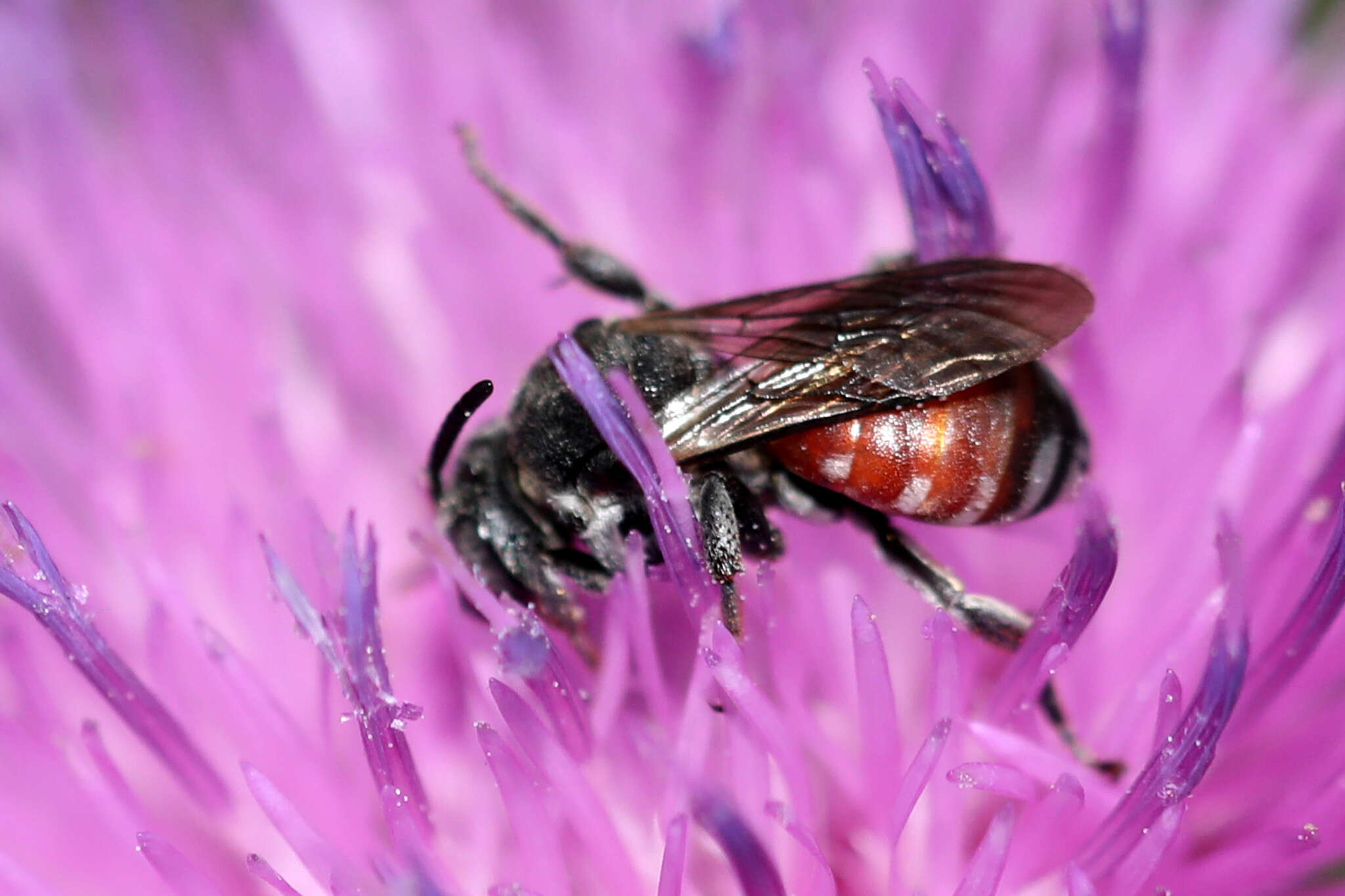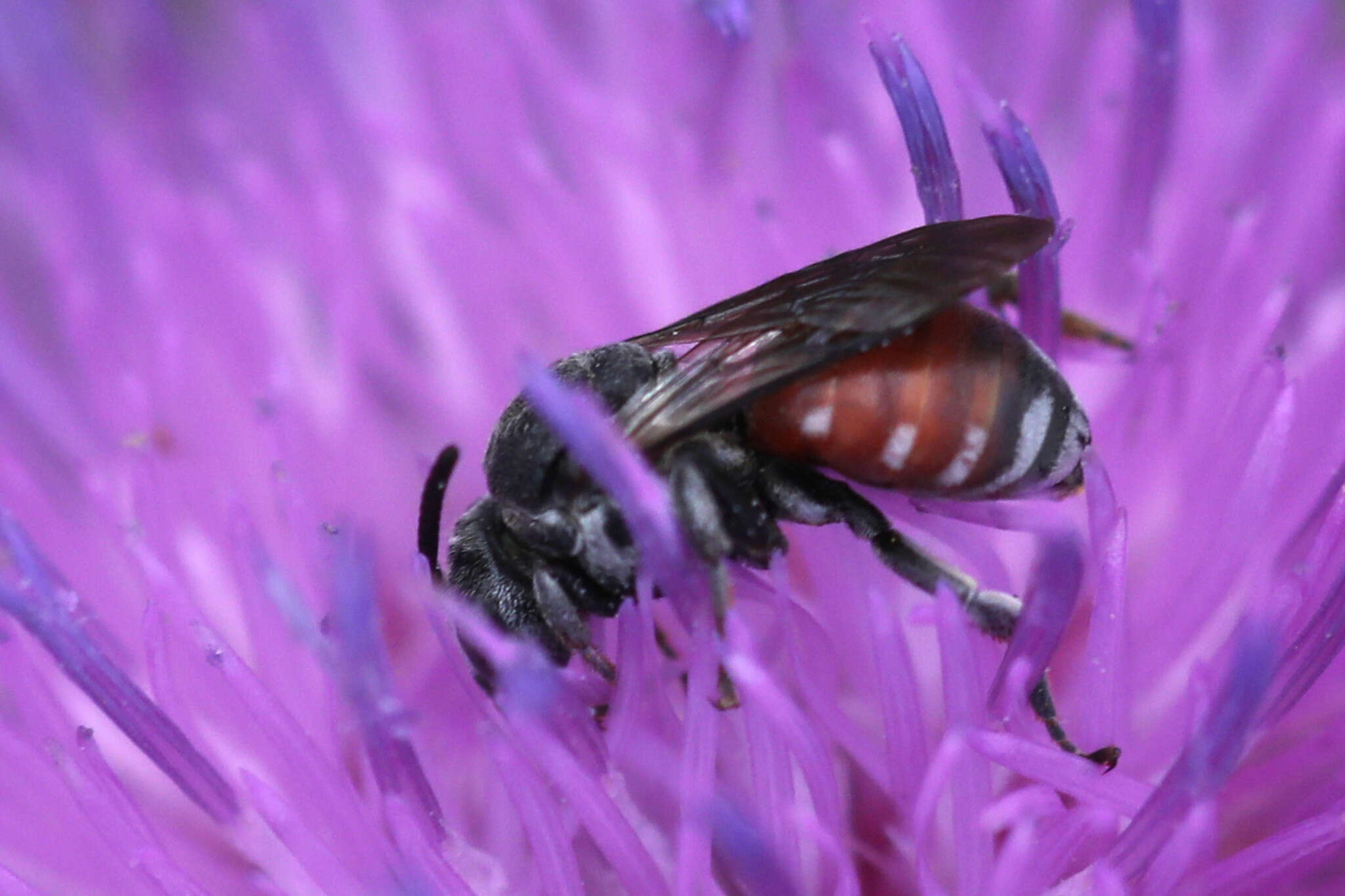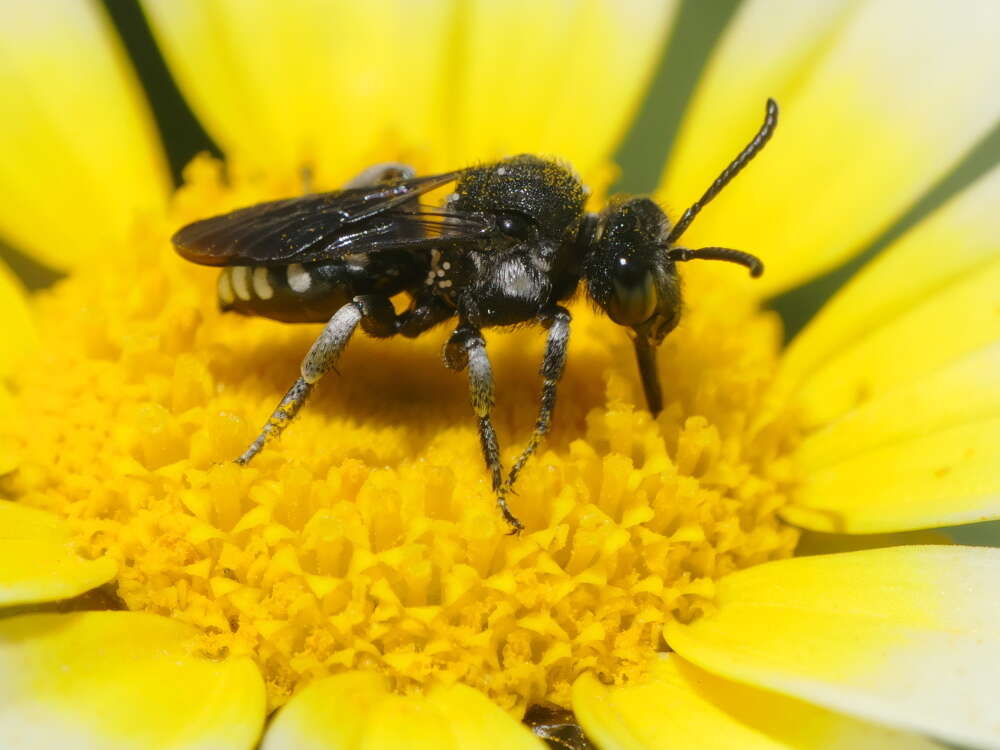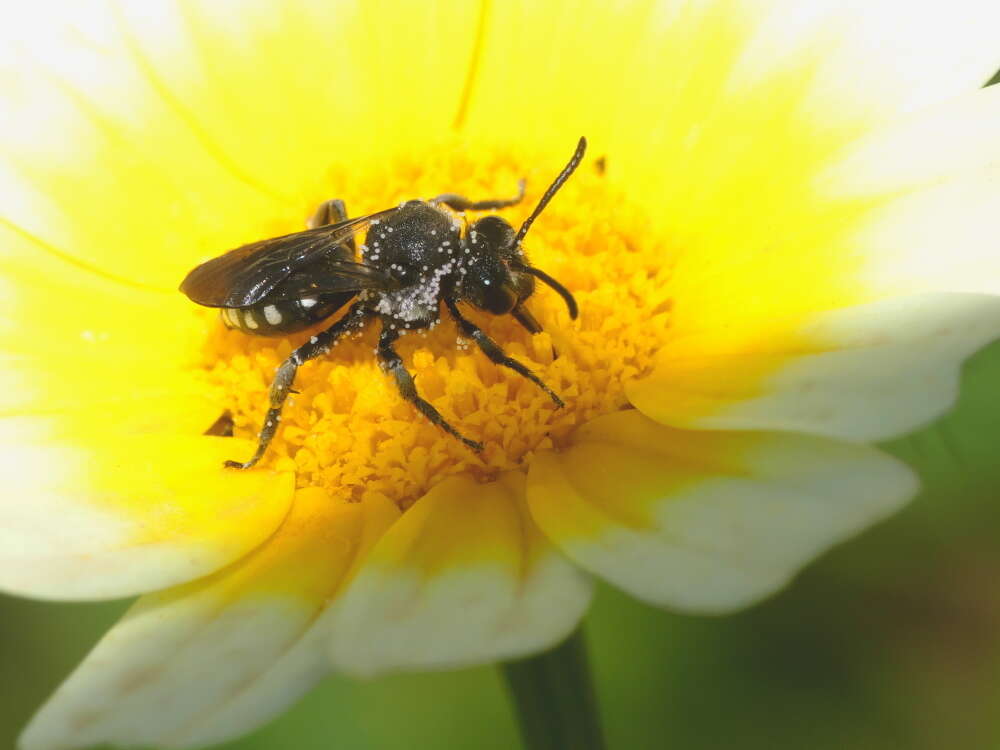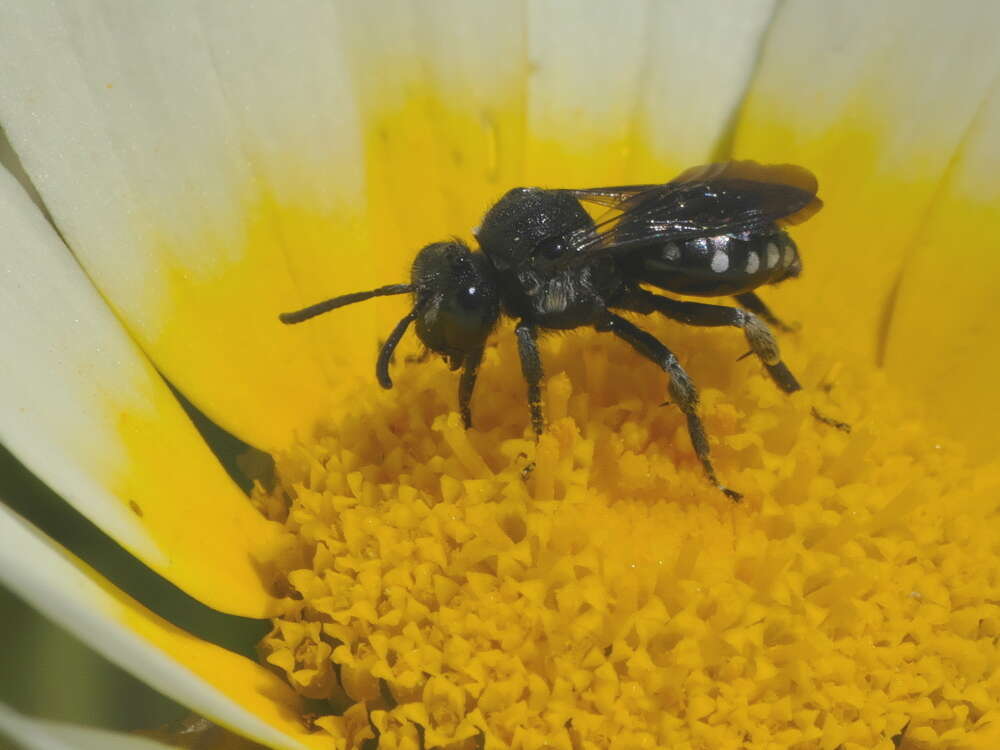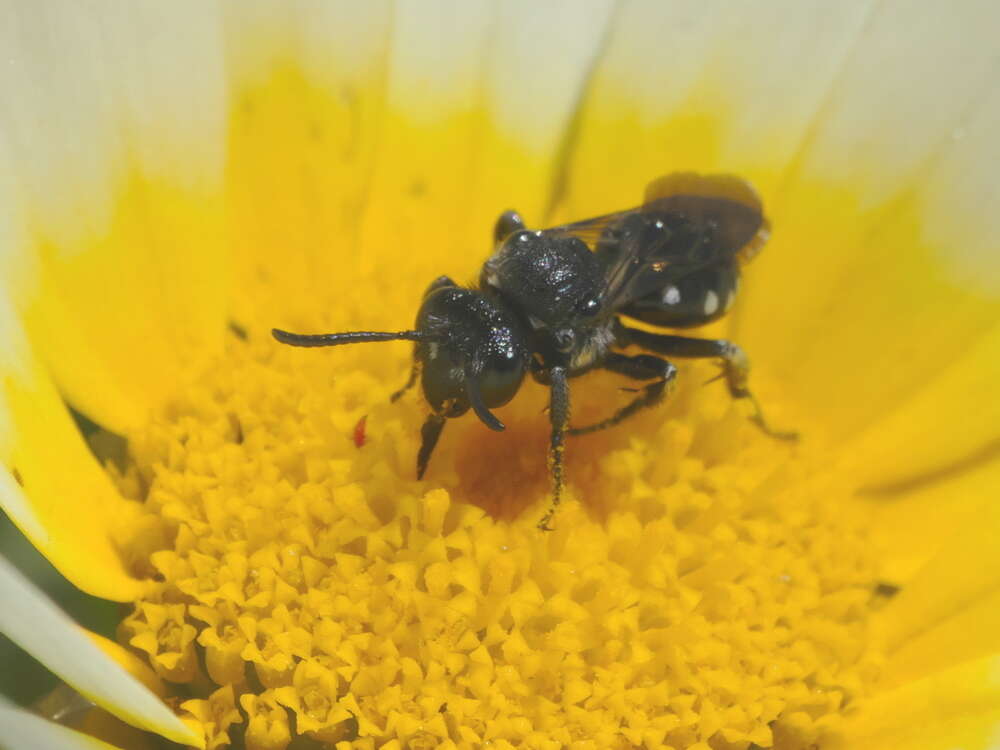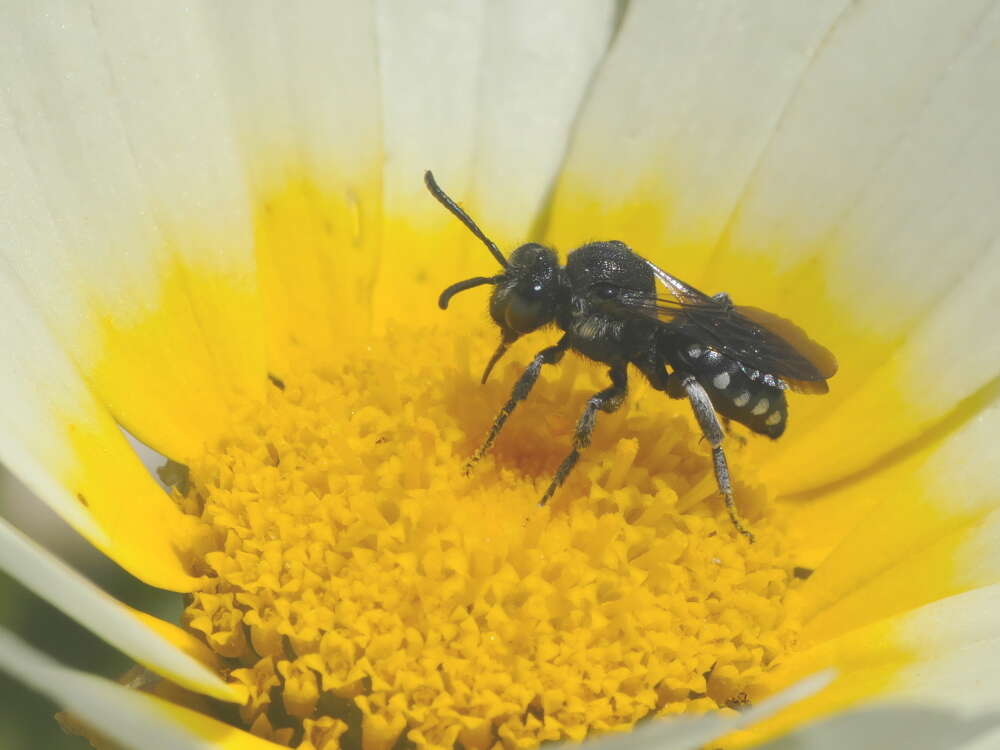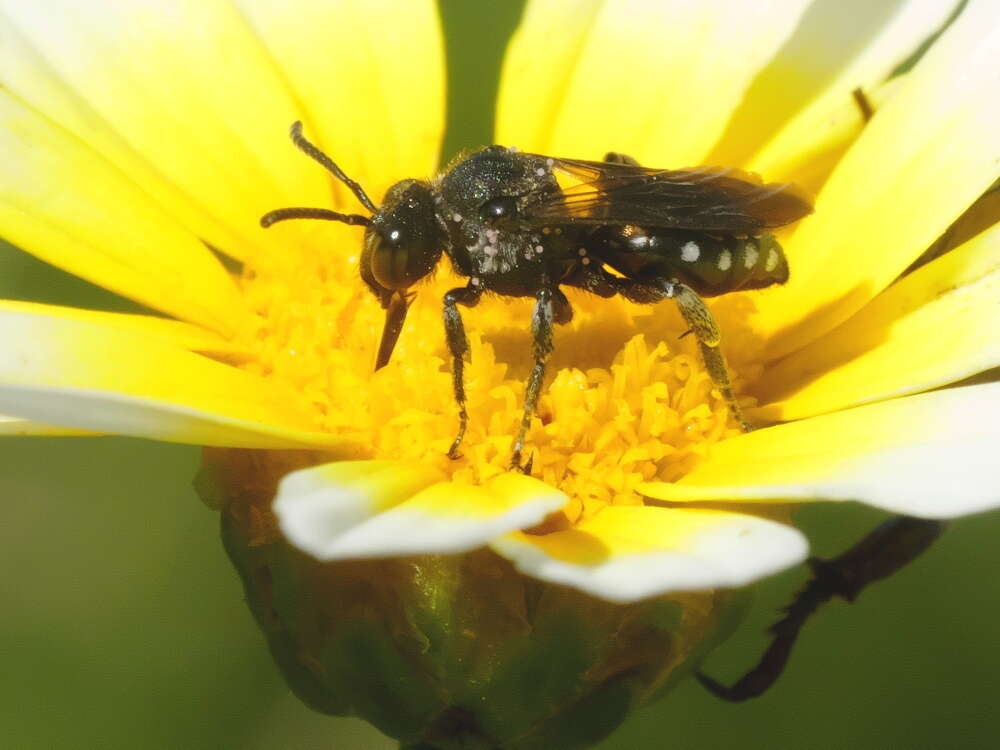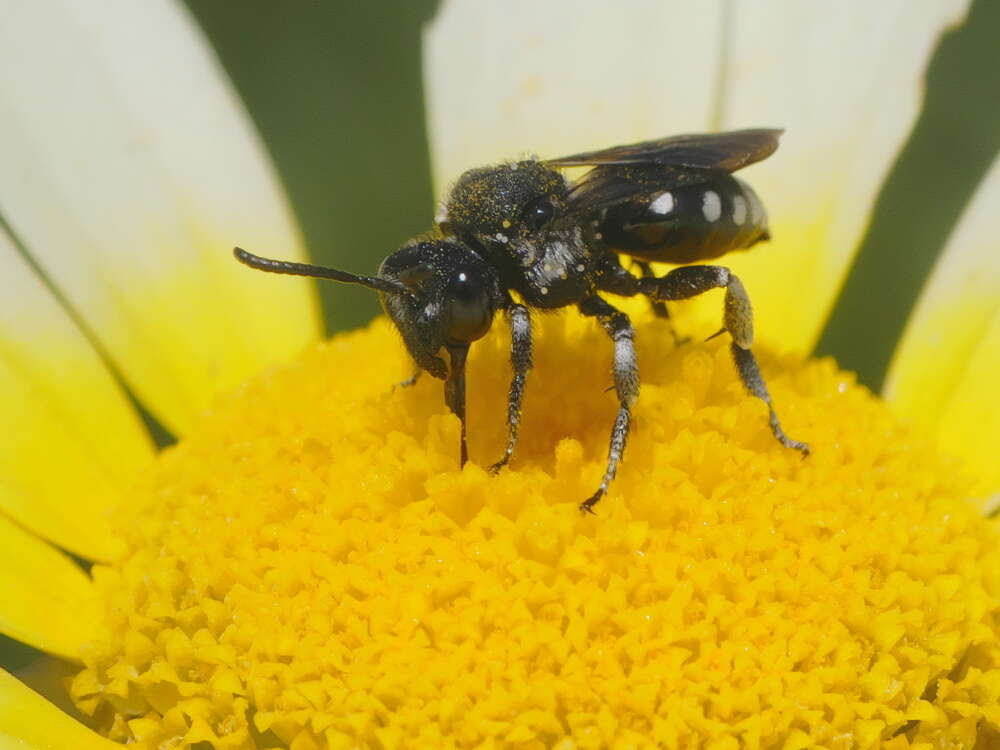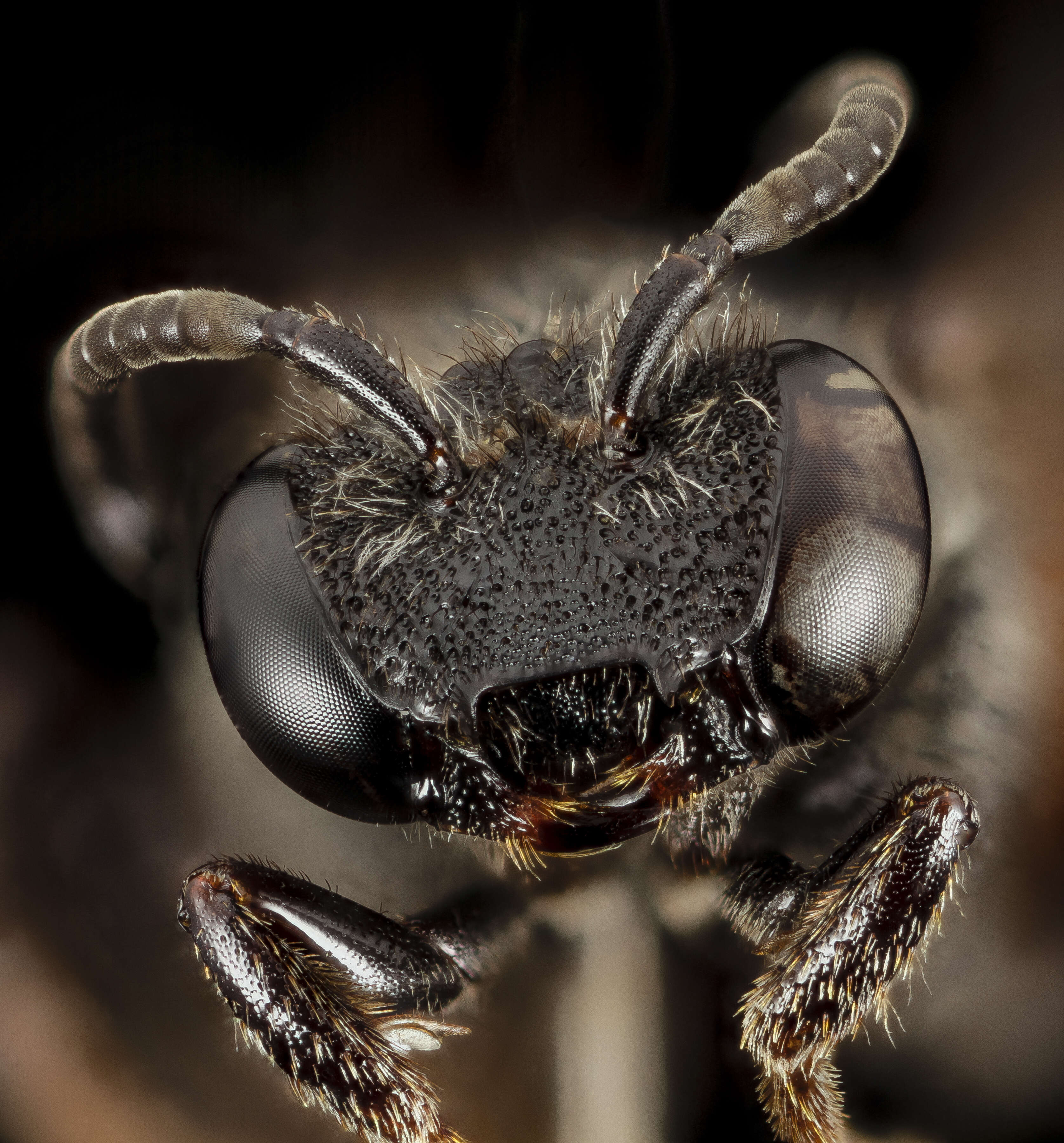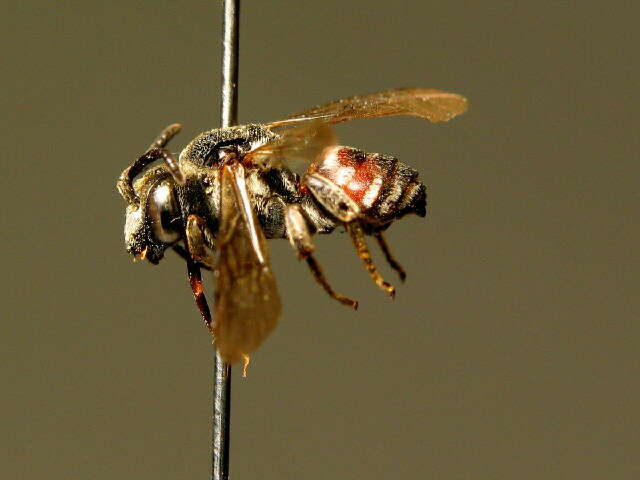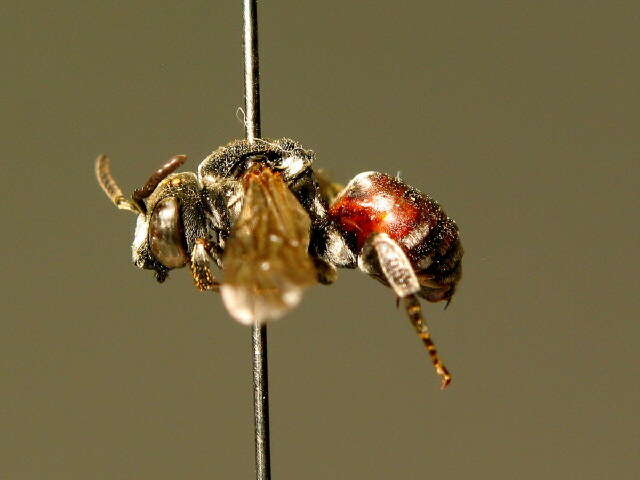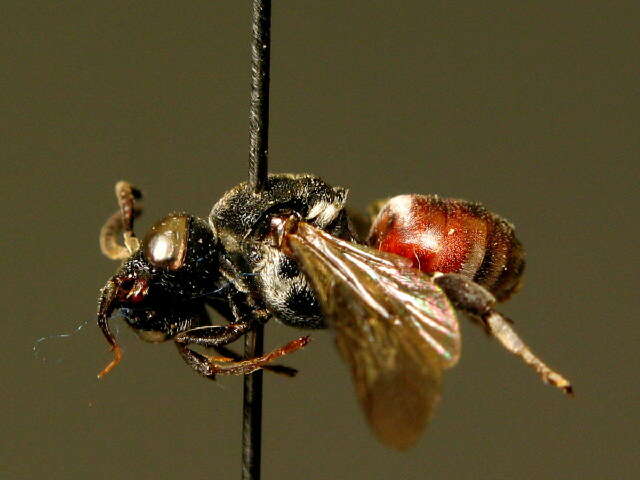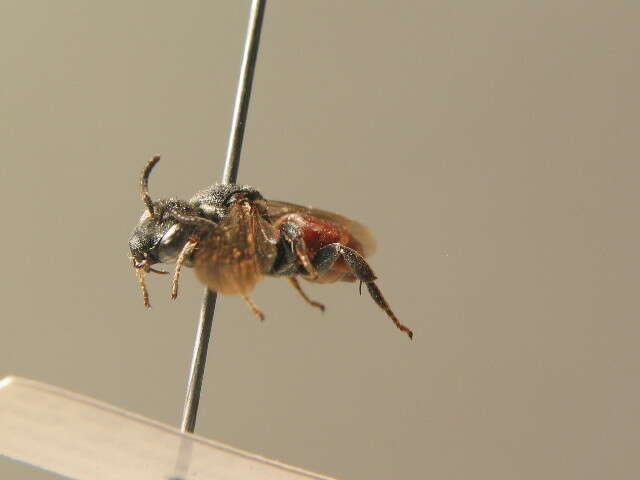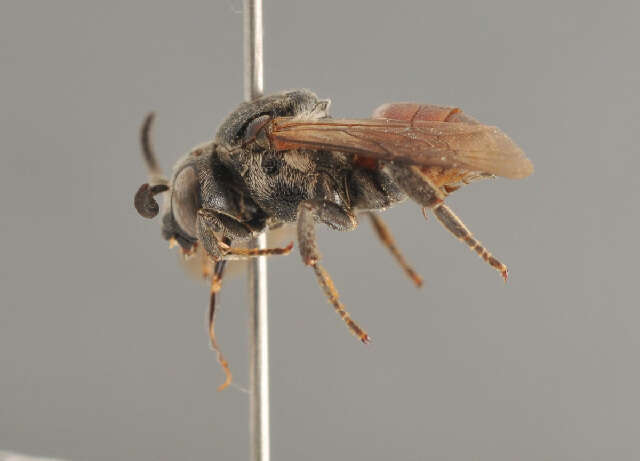Ammobates muticus, Mediterranean Bee Stalker, specimen collected by E.L. Merim in Palermo, Italy
Another red-abdomened cuckoo bee; why is it that so many cuckoo bees are more brightly colored than their hosts? While we are not sure of the reason, it seems possible that it more important for cuckoo bees to warn off potential predators that might learn to associate their brighter colors with receiving a painful sting. Cuckoo bees spend all day flying around, often close to the ground, looking for host nests, while the hosts will be outside their nests only for short periods while foraging. This exposes the cuckoo bees to greater risk of predation and this might mean that brighter colors are more advantageous for them,
While there might be an abundance of described species in the Bee Stalker genus (50 are on the books at the moment) there is little known about them and we could find nothing about the particular species shown here other than the localities where it has been collected and representatives of the species stored in museums. Despite the relatively large number of described species the group is surprisingly limited in its overall geographic range, essentially just southern Europe to Central Asia with one species near the southern tip of Africa. From the few species whose habits are known or suspected, we know that Bee Stalkers try to invade nests of bees in the speciose groups of Long-horned and “flower-loving” (Anthophorini bees. As we have said many times in this book…we think there is certainly much more to learn about this group.
~~~~~~~~~~{{{{{{0}}}}}}~~~~~~~~~~
All photographs are public domain, feel free to download and use as you wish.
Photography Information: Canon Mark II 5D, Zerene Stacker, Stackshot Sled, 65mm Canon MP-E 1-5X macro lens, Twin Macro Flash in Styrofoam Cooler, F5.0, ISO 100, Shutter Speed 200
Further in Summer than the Birds
Pathetic from the Grass
A minor Nation celebrates
Its unobtrusive Mass.
No Ordinance be seen
So gradual the Grace
A pensive Custom it becomes
Enlarging Loneliness.
Antiquest felt at Noon
When August burning low
Arise this spectral Canticle
Repose to typify
Remit as yet no Grace
No Furrow on the Glow
Yet a Druidic Difference
Enhances Nature now
-- Emily Dickinson
Want some Useful Links to the Techniques We Use? Well now here you go Citizen:
Basic USGSBIML set up:
www.youtube.com/watch?v=S-_yvIsucOY
USGSBIML Photoshopping Technique: Note that we now have added using the burn tool at 50% opacity set to shadows to clean up the halos that bleed into the black background from "hot" color sections of the picture.
www.youtube.com/watch?v=Bdmx_8zqvN4
PDF of Basic USGSBIML Photography Set Up:
ftp://ftpext.usgs.gov/pub/er/md/laurel/Droege/How%20to%20Take%20MacroPhotographs%20of%20Insects%20BIML%20Lab2.pdf
Google Hangout Demonstration of Techniques:
plus.google.com/events/c5569losvskrv2nu606ltof8odo
or
www.youtube.com/watch?v=4c15neFttoU
Excellent Technical Form on Stacking:
www.photomacrography.net/
Contact information:
Sam Droege
sdroege@usgs.gov
301 497 5840

